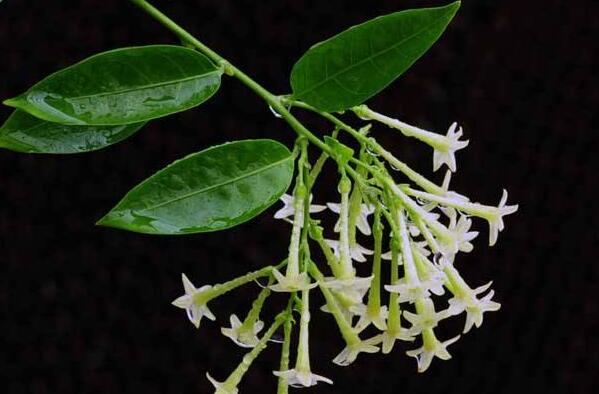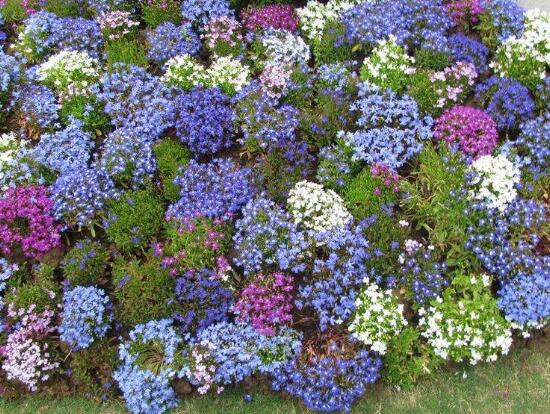The breeding method of the other shore flower, master 4 points to make the other bank flower full house / change ten pots in one pot.
The other shore flower, also known as Manzhu Shahua, although it does not mean very well, it is really beautiful after flowering, and many flower friends are willing to raise it. However, a pot of other shore flowers is indeed a bit monotonous, if we want to change one into two, two into more, then we need to master the breeding methods of other shore flowers. Different from other flowers using cuttage propagation, there are generally four propagation methods, the most common of which is the ball-sharing method. Let's have a look.
1. Four propagation methods of Flos Lonicerae

Although in many areas, the other shore flower is an unlucky flower, but its shocking red is still liked by many people, and planting only one pot is not satisfied, so it is very important to master the breeding method of the other shore flower. It is understood that there are four propagation methods, namely, ball division, cutting, tissue culture and sowing. The specific methods are as follows:
(1) Ball-sharing method
Unlike other flowers, which are propagated by cuttings, the propagation method of the other shore flower is mainly to divide the ball. Dig the plant out of the pot soil during the dormant period or after flowering, remove the seed ball near the mother ball and plant it, and it will blossom in about one or two years.
(1) cutting method
In addition to the commonly used ball-dividing method, bulb cutting is also one of the propagation methods of Flos Lonicerae. The specific practices are as follows:
1. Dig out the bulbs of the flowers on the other side from the soil, rinse them under clean water and remove the excess soil.
2. Use a knife to cut the cleaned bulb base in a meter shape, and the cutting depth is about 1/2 to 2/3 of the bulb length.
3. Disinfect the cut bulbs and air-dry them in a cool environment.
4. Insert the bulb into the wet sand, perlite and other substrates. After about 3 months, adventitious buds can be seen at the junction of scales and basal plate, and small bulbs grow gradually, and seedlings can be formed after separation and cultivation.
(3) tissue culture method
Using MS medium, picking pedicel and ovary as explants, after culture, calli will be produced at the cut. Adventitious roots can be formed after 1 month, and adventitious buds can be formed after 3 to 4 months. Adventitious buds and corms can also be produced by using pedicels and stemmed scales as explants.
(4) sowing method
This method of propagation of the other shore flower is used outdoors, but not in the family potted plant. this method is generally used for the hybridization of the other shore flower and other varieties. When sowing in the natural environment, only a few seedlings pull out a leaf in the first growth cycle, which can be transplanted once in the seedling stage, and it takes about 4 years from sowing to flowering.
Note: because the seeds of ① are dormant in summer, they should avoid sowing in summer and can be sown in other seasons; sow immediately after seed collection in ②, keep the temperature at 20 ℃, and the radicle can be seen in about 15 days.
Know how to raise flowers on the other side, and then understand the breeding methods of flowers on the other side, and you will become a little expert in raising flowers on the other side. However, before raising, we still have to consider, oh, after all, the other shore flower language is not lucky, and its flowering looks a little strange. But if you like it and are not superstitious, you might as well raise it and have a look. Finally, may the flowers on the other side of the river bloom beautifully.
How does the other shore flower reproduce? Introduction to the Propagation methods of Flos Lonicerae
The other shore flower is a plant of the family Amaryllidaceae, which likes a shady and humid environment and is afraid of bright light. It is suitable for growing in loose and fertile sandy soil. It is widely cultivated all over the world. It is an excellent perennial herbaceous flower. It can be propagated by means of ball division, sowing, scale base cutting and tissue culture. Let's take a look at it.
Ball-dividing propagation
The method of dividing balls is the easiest way to reproduce. The plants are dug up during the dormant period or after flowering, and the epiphytic bulbs near the mother ball are removed and planted, and they can blossom in about one or two years.
Scale cutting method
The base of the cleaned bulb was cut into eight parts in meter shape, and the cutting depth was about the length of the bulb. After disinfection and shade drying, it was inserted into the substrate such as moist sand and perlite. After 3 months, adventitious buds could be seen at the junction of the scale and the base plate, and bulbs were gradually formed, and seedlings could be formed after separation and cultivation.
Tissue culture method
Using MS medium, pedicel and ovary were used as explants. After culture, calli could be produced at the incision. Adventitious roots can be formed after 1 month and adventitious buds can be formed after 3-4 months. Adventitious buds and corms can also be produced by using pedicels and stemmed scales as explants.
Sowing propagation
It is generally only used for cross breeding. As the seed has no dormancy, it should be sown immediately after seed collection, and the radicle can be seen after 15 days at 20 ℃. When sowing in the natural environment, only a few seedlings pull out a leaf in the first growth cycle, and can be transplanted once in the seedling stage. It takes about 4 to 5 years from sowing to flowering.
The Propagation method of Flos Lonicerae
The ornamental nature of the other shore flower is very strong, but the rhizome of the other shore flower is poisonous, and accidental eating will cause poisoning symptoms. Although the other shore flower has a certain medicinal value, it will lead to toxicity if it is not handled properly. In the living room and balcony at home, putting a pot of other shore flowers on the balcony can also play the function of beautifying the environment, so how should the other shore flowers breed?
Other shore flower
1. Bulb reproduction: dig up the plant during the dormant period or after flowering, remove the epiphytic bulb near the mother ball and plant it, which can blossom in about one or two years.
2. Sowing method: generally only used for cross breeding. As the seed has no dormancy, it should be sown immediately after seed collection, and the radicle can be seen after 15 days at 20 ℃. When sowing in the natural environment, only a few seedlings pull out a leaf in the first growth cycle, and can be transplanted once in the seedling stage. It takes about 4 to 5 years from sowing to flowering.
3. Scale base cutting method: the cleaned bulb base was cut into eight parts in meter shape, and the cutting depth was about the length of the bulb. After 3 months of disinfection and shade drying, adventitious buds can be seen at the junction of scales and substrate, and bulbs can be formed gradually, and seedlings can be formed after separation and cultivation.
4. The method of tissue culture and propagation: using MS medium, pedicel and ovary as explants, after culture, calli can be produced at the incision. Adventitious roots can be formed after 1 month and adventitious buds can be formed after 3-4 months. Adventitious buds and corms can also be produced by using pedicels and stemmed scales as explants.
- Prev

There are several propagation methods of nocturnal incense, mastering cuttings to change your pot into ten pots / a room full of flowers
Every flowering season, night incense will produce many beautiful flowers with fresh colors and rich fragrance, which is a rare feast for us. However, many flower friends are not satisfied, because a pot of evening incense is too monotonous, multiple pots blossom together to be beautiful, and at this time we need to master the breeding method of night incense.
- Next

How to raise the star, the seed planting methods and precautions / no more watering
All over the sky is a very beautiful flower, giving people a fresh and lovely beauty! In many flower arrangements, starry stars are essential. We see more stars in the flower shop. In fact, we can also plant them at home. Many people do not know how to raise the stars, the planting methods and precautions of seeds.
Related
- Fuxing push coffee new agricultural production and marketing class: lack of small-scale processing plants
- Jujube rice field leisure farm deep ploughing Yilan for five years to create a space for organic food and play
- Nongyu Farm-A trial of organic papaya for brave women with advanced technology
- Four points for attention in the prevention and control of diseases and insect pests of edible fungi
- How to add nutrient solution to Edible Fungi
- Is there any good way to control edible fungus mites?
- Open Inoculation Technology of Edible Fungi
- Is there any clever way to use fertilizer for edible fungus in winter?
- What agents are used to kill the pathogens of edible fungi in the mushroom shed?
- Rapid drying of Edible Fungi

